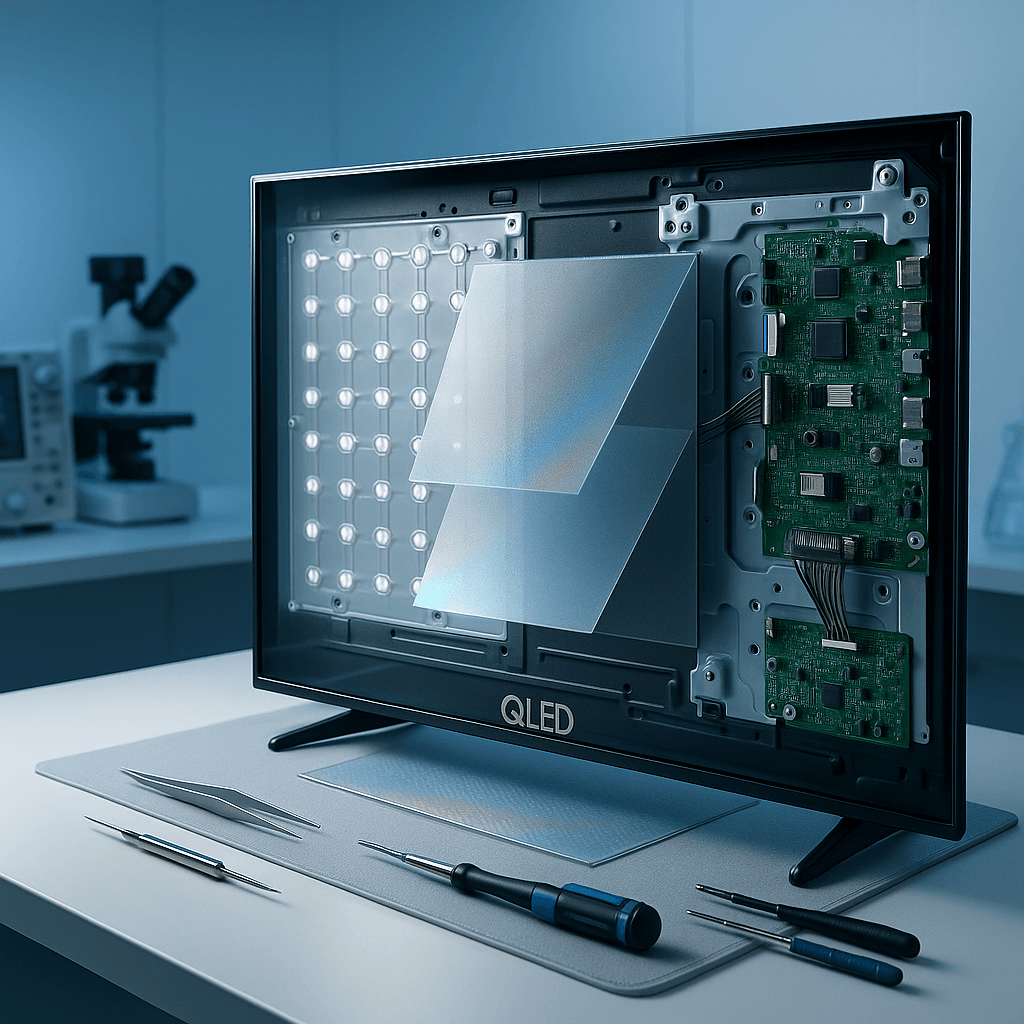Samsung just pulled back the curtain on its QLED TV technology in an unprecedented teardown that reveals why the company claims to make the world's only "real" quantum dot displays. The deep dive into the Q4 AI processor, quantum dot layers, and blue LED backlighting shows how Samsung's cadmium-free quantum dots deliver colors that traditional LCD TVs simply can't match.
Samsung just did something no TV manufacturer has attempted before - completely dismantling one of its flagship QLED displays to prove a point about "real" quantum dot technology. The teardown, conducted by Samsung researchers Kevin Cha and Jang Nae-won from the Visual Display Business, strips away every layer to reveal what the company calls the fundamental difference between genuine quantum dot displays and conventional LCD screens.
The timing isn't coincidental. As competitors flood the market with displays labeled as quantum dot TVs, Samsung is doubling down on its claim that most aren't using actual quantum dot materials. "To qualify as a real quantum dot TV, three conditions must be met," Samsung engineers explain in the teardown documentation. Those requirements: a dedicated QD layer, sufficient quantum dot concentration, and a blue LED backlight.
Samsung says it's the only manufacturer worldwide to meet all three criteria, earning the 'Real Quantum Dot Display' certification from Germany's TÜV Rheinland. But the teardown reveals just how complex achieving that certification really is.
At the heart of every Samsung QLED sits the Q4 AI Processor, a specialized chip that goes far beyond basic image processing. This component continuously analyzes the viewing environment, automatically adjusting both picture quality and audio output in real-time. "By automatically adjusting both image and sound based on the surrounding environment, the AI processor makes the viewing experience more immersive," according to Samsung's technical documentation.
But it's the quantum dot layer itself that Samsung considers its crown jewel. Unlike conventional LCD displays that rely on white LED backlights filtered through color layers, Samsung's QLED architecture uses bright blue LEDs that shine through a film containing actual quantum dot nanoparticles. These microscopic semiconductors convert blue light into precise red and green wavelengths, creating what Samsung calls "meticulous color representation."
The difference becomes stark when Samsung compares color spectrum graphs. QLED displays show narrow, distinct peaks for red, green, and blue wavelengths, while conventional LCD TVs display broader bandwidths with multiple peaks in the red spectrum. "LCD TVs without QD layers display generally lower peaks, a wider bandwidth in green as well as multiple peaks in red, hindering accurate color reproduction," Samsung researchers note.












